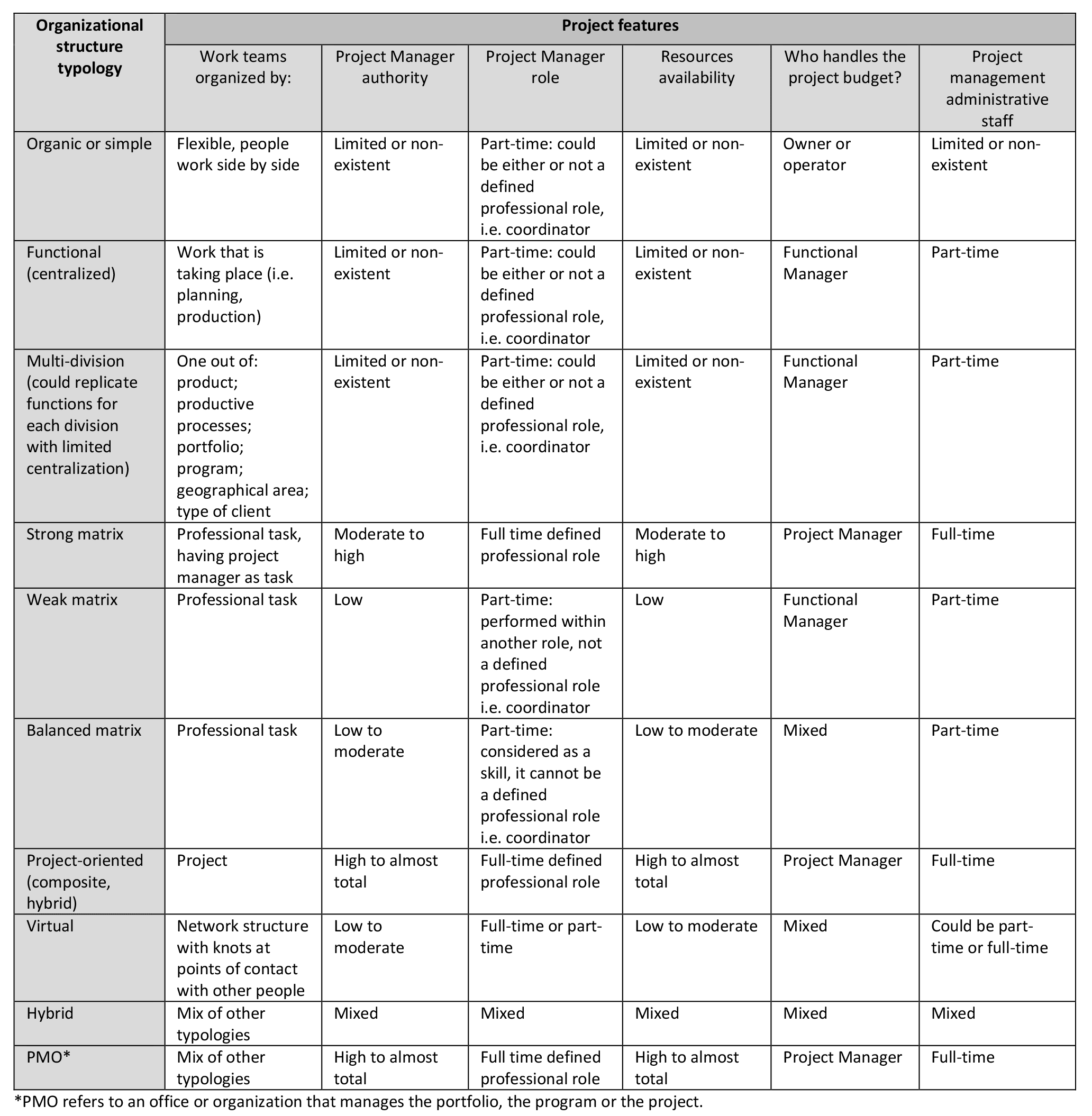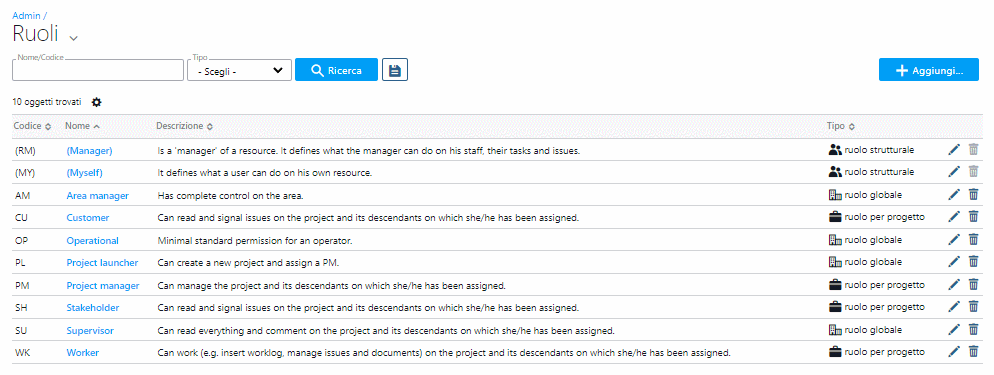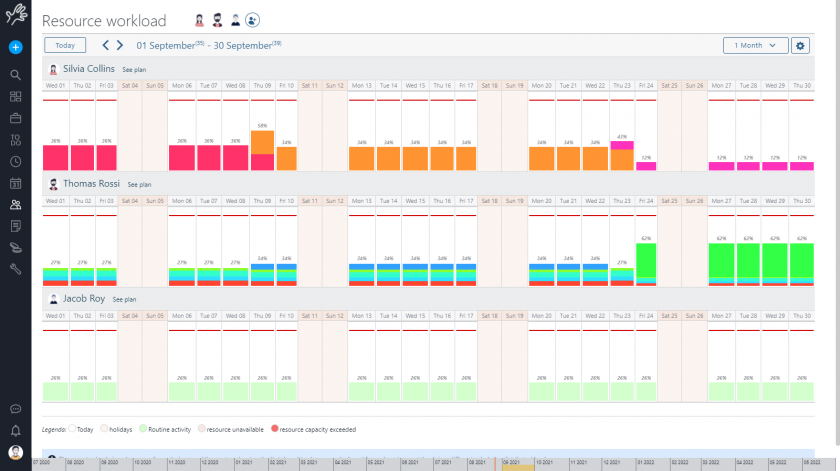The project organizational structure is an essential tool for determining the hierarchy of people, their function, workflow and reporting system.
It is a factor in project management that plays a fundamental role in guiding and defining the way in which the organization carries out its operations.
There are different project organizational structures defined according to the area in which the organization operates: they depends on the activities related to the core business.
If an organization is dealing with temporary jobs for example, the structure will probably better manage the recruitment and dismissal of employees as needed.
On the other hand, if the organization deals with a production chain that requires continuous operation, it will have a different structure. In this case, the tasks assigned will engage employees for a longer time to achieve the goals of the organization.
As organizations grow or their needs change, the organizational structure must adapt to support the new goals.
TABLE OF CONTENTS
- Why is a project organizational structure necessary?
- Types of project organizational structure
- Organic or Simple Organization
- Functional or Centralized Organization
- Multi-divisional Organization
- Matrix Organization
- Project oriented (composite or hybrid) Organization
- Virtual Organization
- Hybrid
- PMO
- The advantages of having an effective organizational structure
- The working tools
Why is a project organizational structure necessary?
Every organization must have a well-defined organizational structure in order to work efficiently and achieve its goals with fewer risks.
In the modern market, organizations must be very competitive, efficient, and dynamic in order to survive and grow. In fact, Stakeholders become more and more aware and demanding and want quick answers.
Therefore, in order to meet the needs of the client and survive in the market, each organization must build an organizational structure capable of best supporting its goals.
Types of project organizational structure
The organizational structure depends on many factors, such as the style of government, the style of leadership, the type of organization, the workflow, the hierarchy, etc.
The PMBOK orders organizational structures into eight types:
- Organic or Simple Organization
- Functional or Centralized Organization
- Multi-divisional Organization
- Matrix Organization – strong, weak or balanced
- Project Oriented (composite or hybrid) Organization
- Virtual OrganizationHybrid
- PMO
There are actually many other classifications, but we prefer to report the official one, mentioned in the sixth edition of the PMBOK.
The table below shows the functions and characteristics of each single type of organizational structure:

Now, let’s see them in more detail.
Organic or Simple Organization
This type of organizational structure is the simplest. Businesses composed of only one person are also included in this category.
This type of organization also includes freelancers. Of course, the role of the project manager is partly covered by the owner or the professional, who personally manage the workflows.
Functional or Centralized Organization
This type of organizational structure is the most commonly used.
In fact, in a functional organizational structure, the organization consists of various departments where people with similar skills gather together.
It is the classic setting in which the staff is structured in areas and departments such as the sales department, marketing department, finance department, etc.
To sum up, this structure is functional as it improves the efficiency of each working group.
Multi-divisional Organization
In an organization of this kind, you can have many functional divisions with a small centralization.
Most of the time these divisions are independent of each other.
Here, an organization is structured in various divisions in which people, with different skills, are held together according to a similar product, service or geographic area.
In conclusion, each division has the resources necessary in order to work and can carry out the task independently.
Matrix Organization
A matrix organizational structure is a hybrid between the functional organization and the project oriented organization.
More secifically, in a matrix organization there can be two main structures: vertical and horizontal.
Here, an employee can be part of a functional group, but can also work on a project.
In turn, a matrix organization can be of three types:
- A strong matrix
- A weak matrix
- A balanced matrix
Stronger organizations are closer to a project oriented organization and here the project manager has most of the authority and has a full-time team.
On the other hand, weak matrix organizations are closer to a functional structure. in this case, the project manager has low authority, no budget control, and often runs a part-time project team.
Instead, balanced matrix organizations combines the properties of both previous types. Here, the project manager has a medium-low authority and a part-time team; the budget, instead, is managed both directly by the PM and by the functional manager.
Project oriented (composite or hybrid) Organization
An organization of this type considers every job as a project. Here, the project manager has full authority to complete the project successfully, has a full-time role, budget control, and a full time team available.
In other words, a team-based organization is another name for a project oriented organization.
Virtual Organization
Another name for this structure is virtual society. Here, the central organization connects to external companies (such as vendors, customers, associates) with a network connection that allows to achieve business growth and profitability. This structure allows the organization to work as a unit.
In a virtual structure, the organization maintains its core business, while the rest of the processes are outsourced. Sometimes, this type of organization is also known as an empty organization.
Here, the project manager has a low-moderate authority and mixed power over the budget. The project team can be full or part-time depending on the situation.
Hybrid
In a hybrid organization, a combination of the above-mentioned structure types can be used.
Responsibility, authority, and other factors can also vary depending on the structure.
PMO
The PMO is also a mixed type of organizational structure, but here the project manager has the highest authority, controls the budget, and has a team completely at his disposal.
The advantages of having an effective organizational structure
An organizational structure is a framework that helps an organization effectively manage its operations and achieve its goals with minimal effort.
This structure defines the relationship between the various departments and teams of the organization. Moreover, it helps organizations to delegate authority, power, and responsibility.
But the project organizational structure also defines how the employees relate to their superiors or to the Project Manager; therefore, it becomes somethings strategic for coordination and cooperation within the group members.
The main advantage of having an effective organizational structure is the reduction of friction and discussions among the employees since the roles, responsibilities, and reporting structure are very clear.
Having an appropriate organizational model can bring huge benefits to any organization. Some of these advantages are:
- Allowing an organization to grow.
- Keeping attention on strategic goals, instead of having each department focused and limited on its agenda.
- Joining a group of people and directing them towards a common goal.
- Allowing employees to improve their skills.
- Making the decision-making process more efficient, smoother, and faster.
- Facilitating employee specialization.
- Allowing better control and use of resources.
- Enabling easier and better communication, which helps reducing conflicts.
- Allowing employees to behave better.
- Helping employees to grow professionally, to make a career, and to simplify the inclusion of new colleagues.
- Helping identifying roles and responsibilities in a clear and precise way.
Therefore, each organization needs an organizational structure, otherwise chaos would take the upper hand.
In short, an organizational structure is essential for the good functioning of a company. Each company should choose its organizational structure according to its specific needs and requirements, since this also depends on the achievement of the prefixed results.
The working tools
So if, as we have seen, organisational structures are multiple and complex, are there instruments that take this diversity into account?
The answer is Twproject. This project management software excels for its great flexibility, and even in role management it is no exception.

Having dealt with companies and project managers from all sectors for over twenty years, Twproject has developed a system that allows any – and we mean literally any – organisational structure to be managed. In this way, the project manager will allocate tasks and permissions in accordance with the company configuration.
Those who use project management software (here, for example, we explain why it is a good idea for managing resource workload) may, however, have the impression that they have to approximate their company’s internal processes and structures.

With Twproject, you will avoid approximation since you will better reflect the relationships within your team, whatever they may be.
For example, Twprojects allows you to manage the complexity of project workload, distinguishing between project, spot or routine ativities.
But there is much more: everything you need to manage your workflow, whatever it is.
To find out more, visit this link and get your free trial. We are sure you will never go back!




